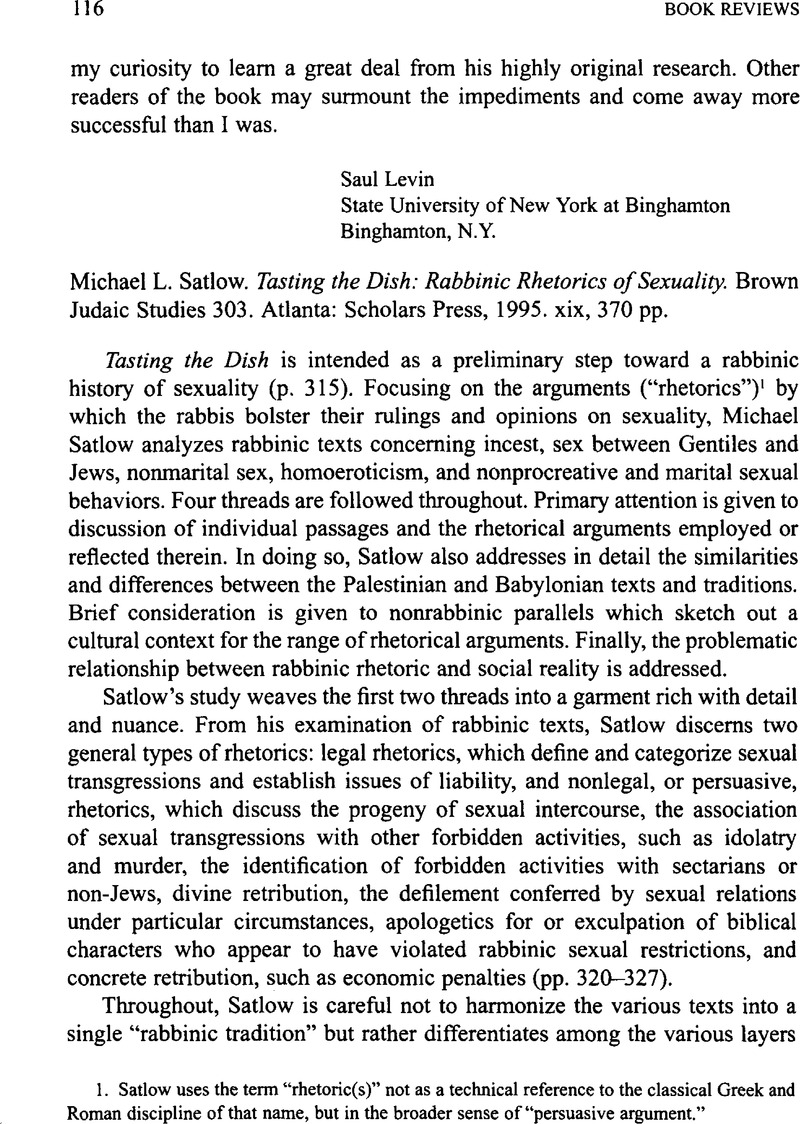No CrossRef data available.
Article contents
Michael L. Satlow. Tasting the Dish: Rabbinic Rhetorics of Sexuality. Brown Judaic Studies 303. Atlanta: Scholars Press, 1995. xix, 370 pp.
Published online by Cambridge University Press: 15 October 2009
Abstract

- Type
- Book Reviews
- Information
- Copyright
- Copyright © Association for Jewish Studies 1998
References
1. Satlow uses the term “rhetoric(s)” not as a technical reference to the classical Greek and Roman discipline of that name, but in the broader sense of “persuasive argument.”
2. The position that the child of such a liaison is a mamzer/etis consistently attributed to Palestinian rabbis by the Babylonian Talmud. Babylonian sages, and the redactor of the Babylonian Talmud, however, most often find the child “fit,” i.e., Jewish (p. 88).
3. The other classes permitted to use or accustomed to using a contraceptive sponge are pregnant and nursing women (Tosefta Niddah 2:6).
4. This is the reading in Tosefta Niddah 2:6. Parallels in the Babylonian Talmud (e.g., Yebamot 12b, 100b, and others) use feminine pronouns rather than masculine ones: “less than this or more than this she has intercourse as she usually does” (p. 233).
5. Babylonian Talmud, Tractate Niddah 13a-b considers “those who marry young girls not of childbearing age” to be among those who delay the Messiah (p. 249; cf. p. 258). Satlow does not address this issue in any detail, however.




